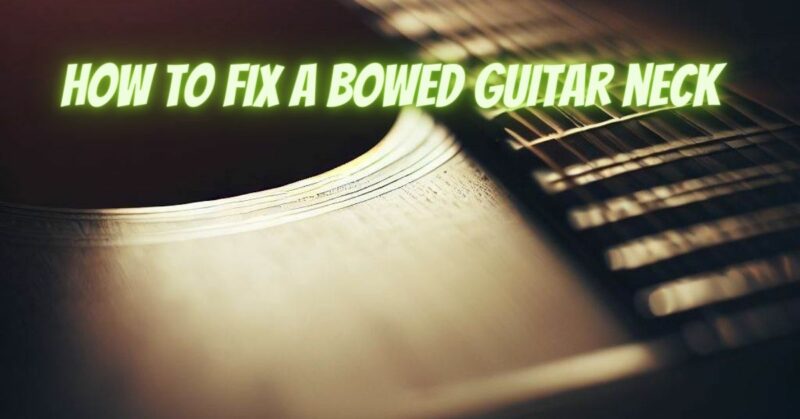A bowed guitar neck can significantly impact playability and sound quality, leading to discomfort, high string action, and buzzing. Fortunately, many neck issues can be resolved by adjusting the neck relief. In this article, we will guide you through the process of fixing a bowed guitar neck by providing step-by-step instructions for neck relief adjustment.
Step-by-Step Guide to Fixing a Bowed Guitar Neck:
- Assess the Neck: Start by examining the guitar neck to determine the extent of the bow. Place the guitar in playing position and observe if the neck appears excessively bowed or concave.
- Determine the Truss Rod Type: Identify the type of truss rod your guitar has. Most modern guitars have an adjustable truss rod accessible through either the headstock or the soundhole. Some vintage or acoustic guitars may have non-adjustable truss rods, requiring professional assistance for correction.
- Understand Truss Rod Function: The truss rod is designed to counteract the tension exerted by the strings, allowing for neck relief adjustment. A clockwise turn tightens the truss rod, counteracting backbow, while a counterclockwise turn loosens it, increasing forward bow.
- Loosen the Strings: To make the adjustment easier, loosen the guitar strings to reduce tension on the neck. Do not remove the strings completely.
- Locate the Truss Rod Adjustment Point: Find the truss rod adjustment point on your guitar. It is typically located either at the headstock, underneath a cover, or accessible through the soundhole.
- Make Small Adjustments: Using the appropriate tool (often an Allen wrench or a specialized truss rod tool), make small quarter-turn adjustments to the truss rod. Remember, gradual adjustments are crucial to avoid causing further damage to the neck.
- Observe the Neck Relief: After each adjustment, allow the neck to settle for a short period. Re-tune the guitar and check the neck relief by observing the gap between the strings and the frets in the middle of the neck. Aim for a slight forward bow, approximately the thickness of a business card.
- Repeat as Needed: If the neck relief is still excessive, continue making small adjustments, repeating steps 6 and 7 until the desired neck relief is achieved. Take your time and be patient during the process.
- Re-Tune and Test: Once the desired neck relief is achieved, re-tune the guitar and test playability. Check for comfortable string action, absence of buzzing, and overall improved playability.
- Seek Professional Help if Necessary: If you are unsure or uncomfortable making adjustments, or if the neck issue persists despite your efforts, it is recommended to seek assistance from a qualified guitar technician. They have the expertise to diagnose and address more complex neck problems.
Conclusion:
Fixing a bowed guitar neck involves adjusting the neck relief through the truss rod. By carefully following the step-by-step guide outlined in this article, you can correct a bowed neck and improve playability. Remember to make small, gradual adjustments, allowing the neck to settle after each turn. If you encounter difficulties or prefer professional assistance, consult a qualified guitar technician who can provide expert guidance. With proper adjustments, you can restore the optimal playability and sound quality of your guitar.

